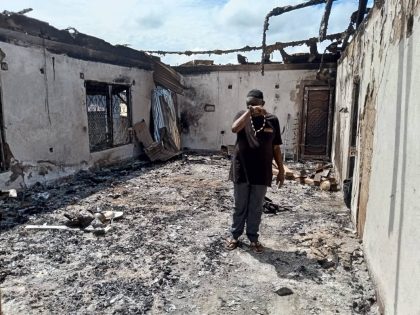Mozambican Occupations
The work of photographer Felipe Branquinho, which portrays workers and working class people in their urban surroundings in Mozambique.

"Jorge Macat, Baker" by Filipe Branquinho.
Photographer Felipe Branquinho’s work is an impressive recent contribution to efforts to move away from clichés of rural Africa and reminds us of the dynamic urban landscapes of African cities. Branquinho focuses on the majority of these cities’ inhabitants, the working class, and portrays workers in their urban surroundings in Mozambique, in the capital Maputo and elsewhere. “Occupations,” the photographer’s ongoing documentary project, seeks to show how workers communicate with the spaces they occupy while they are exercising their profession. The pictures portray fishermen, security guards, domestic workers, barbers, bakers, and many more. Branquinho’s aim is to demonstrate “how people work, where they work, and show that they work with a lot of dignity.”
The photos are carefully composed. Workers are placed in the center of the picture, look directly into the camera, and the symmetry of their surroundings create a certain depth that invites onlookers to interact with the worker portrayed.
Born in Maputo, Branquinho grew up as son of a photojournalist who was well connected in the art community. Thus the artist was early on confronted with the work of such famous Mozambican photographers as Ricardo Rangel, Kok Nam, and José Cabral. Branquinho studied architecture in Brazil but was always interested in photography, and pursued that passion when returning to Mozambique.
The photographer finds his subjects on strolls through the city. He started the project by photographing urban public employees, but then quickly moved on to also taking pictures of workers in other professions—athletes, firemen, domestic workers—and homeless people and kids. “Occupations” turned into a study of how people spend their time in the urban environment.
The artist does not only portray but also interacts with his subjects. During the show Temporary Occupations in 2011, Branquinho projected his photos in a large window of the Mozambican Association of Photography located on Julius Nyerere Avenue in Maputo. The avenue is a busy street that the working class—among businessmen, tourists, and street vendors—uses to go to work. In that way, the photographer made his work accessible to the protagonists of his work.
Branquinho’s current work includes the cinematography for short films under the title Journey to the Center of Capricorn, directed by the Mozambican artist Rui Tenreiro. The short films point to the power and complexity of urban structures in constant degradation: “At the top of the gray anthill, in the center and at the zenith of this structure is the imperial cabinet, symbol of revolution and national power.” Here’s an example:
- More photos and an interview with the photographer can be found here. Another short film here. H/T African Digital Art.



















